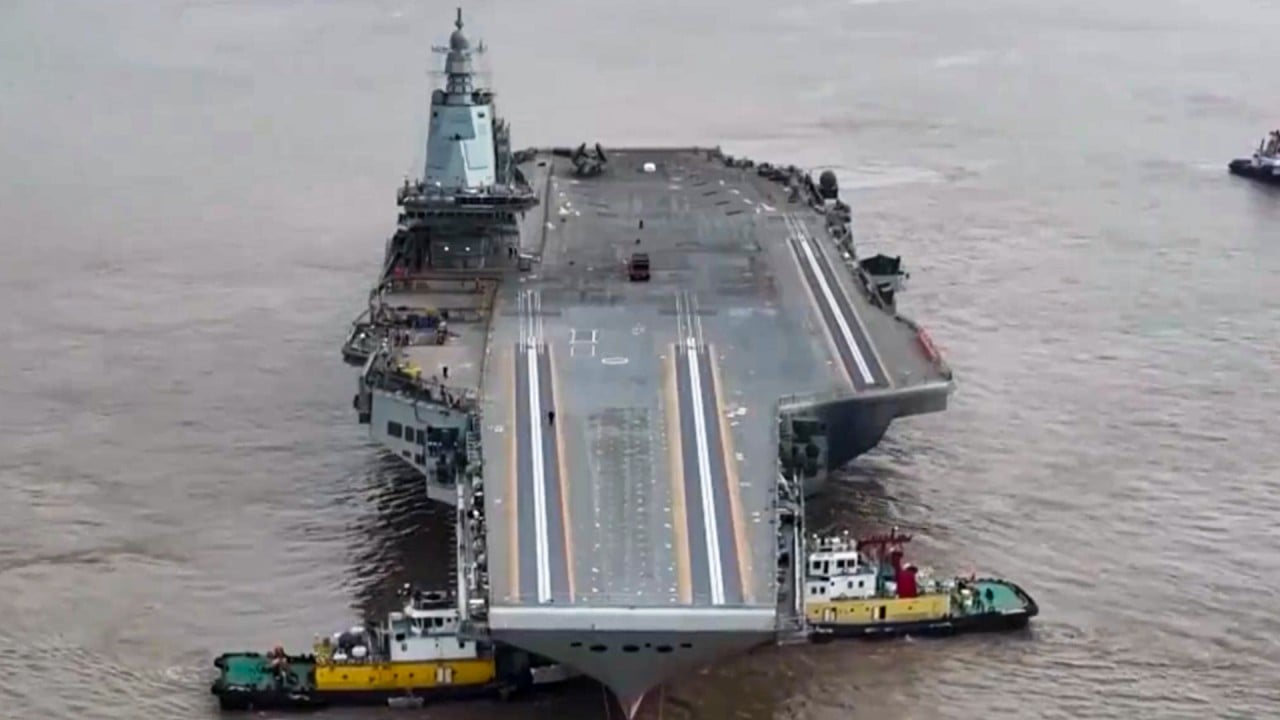
Smooth sailing for China’s Fujian aircraft carrier as it finishes first sea trial
- The country’s most advanced aircraft carrier achieves ‘expected results’ in eight-day test of its power and electrical systems, Xinhua reports
- Testing of the vessel’s cutting-edge electromagnetic catapult system is not likely to happen until its third to fifth trial, retired PLA colonel says
The aircraft carrier completed tests of its power and electrical systems and achieved “the expected results” during its first trial, the news agency said.
The Fujian, launched in June 2022, is China’s first aircraft carrier equipped with electromagnetic catapults, which will enable the vessel to launch aircraft more frequently.

Describing the power system as the “heart” of the aircraft carrier, Yue said checking power and electricity were in line with the typical trial process.
“If the power system is substandard and the pitfalls are not addressed, a later trial may be affected, or the test results might not be accurate,” he said.
China’s other commissioned aircraft carriers, the Liaoning and the Shandong, completed 10 and nine trials respectively over the course of a year before they were put into service.
The retired PLA colonel said Fujian’s testing process would be similar, while its electromagnetic launch catapults – a feature that has received much international attention – would be tested during the middle of the process, probably the third to the fifth trial.
He added that the carrier would complete a total of eight or nine trials over a year.
Yue explained that successful launching of the catapults demanded working power generation, energy storage, electromagnetic systems, and command systems, so tests of most of the carrier’s core operational systems had to be completed first.
Observers of China’s military and shipbuilding industry have speculated about whether the PLA will use nuclear power for its fourth carrier, but Beijing has not outlined its plans
Yue said that since China had achieved electromagnetic catapult launch capability, the next carrier was likely to make progress on nuclear power – an advancement he described as a “bigger step” than the catapult system.
The USS Gerald R. Ford – the world’s only other aircraft carrier with an electromagnetic catapult system – was commissioned in 2017 but did not depart on its first deployment until 2022.


